Košice as a city of happy inhabitants
Well-being is an individual state of feeling healthy and happy, the overall condition of life satisfaction. The environment in which people live, the accommodation, mutual trust, culture, and quality of public spaces and services, all contribute towards the citizens’ satisfaction. That is the reason why we need to answer the essential questions – (1) what do we have in mind when talking about well-being in Košice 2.0 project, (2) How can we achieve it, and (3) how can we measure the improvement.
Different concepts of well-being and methods to measure it
English word well-being doesn’t have a unanimous translation in the Slovak language yet. Slovak versions can be welfare, quality of life, satisfaction, contentment, and happiness. In common language, they are intertwined and used in various meanings. Moreover, it depends whether we use these terms in philosophy, psychology, medical science, economy, or sociology.
We can rely on the basic thesis that the primary goal of the economy is to improve people’s well-being. Until we defined and accepted this technical term and created the methods to measure it (at the end 20th century), it was more about economic welfare, the living standard of people, and the country.
But can a better financial situation bring higher life satisfaction? In sayings and quotes of wise people, it is often said that wealth doesn’t always make people happy. This way, they indirectly draw attention to personal satisfaction and happiness in life. Suppose people live in the same economic and social conditions. In that case, they do not have to be equally satisfied because satisfaction with one’s life is connected with the internal value setting and human behavior.
The 21st century has enabled us to fulfill our dreams, needs, and different lifestyles, might it be welfare, freedom, healthcare, social and employee recognition, experiences, comfort, traveling, or food quality. Our requests to experience happiness have risen enormously along with the demands on the quality of life and environment from the perspective of the country or the city. Due to the sustainability of growth, International initiatives recommend shifting our focus from economic production (as a percentage of GDP growth) to measuring people’s well-being. Nevertheless, political decisions in many countries still prioritize faster economic growth to social and environmental goals.
The pleasure of success, experiences, or shopping contributes towards subjective well-being. But the long-term factors of well-being are physical and psychological health, good relationships among partners, family, work or community, new knowledge, fulfillment of desires, healthy and comfortable environment, etc. We can try to create a consensus concept of essential aspects of life quality, which form people’s well-being. But every one of us has specific priorities and expectations of life. Evaluation of one’s own subjective well-being is therefore created in a way, that everyone considers how they perceive their individual quality of life. We get to the main definitions and methods of how to define and measure them.
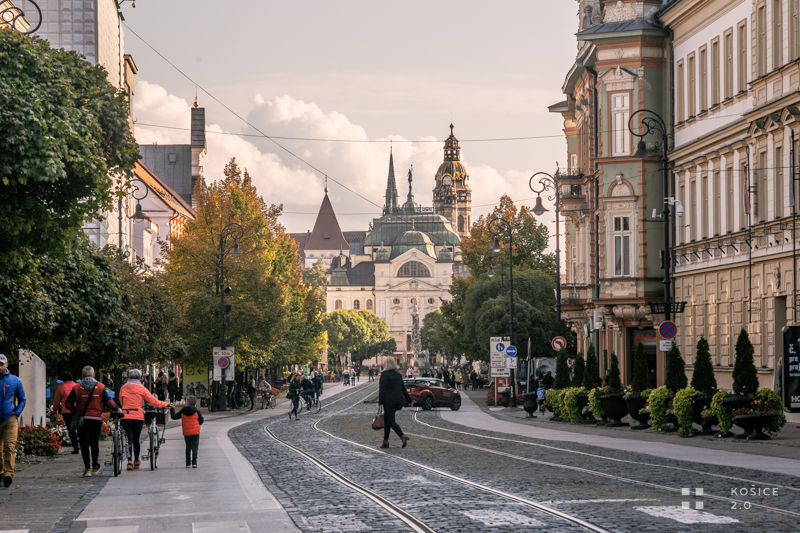
1. Subjective well-being (the concept established in Diener, 1984)1
The well-being of a human being is an individual state of feeling healthy and happy. It is an overall state of satisfaction with one’s life. A person can evaluate the quality of life through cognitive judgment and affective reactions. It means that the answers are related to the ability of cognition and self-awareness, as well as the dominant positive emotions of joy and optimism and negative anxiety and fear. The evaluation of one’s well-being also depends on the personal characteristics of a person – the gender, age group, nationality and ethnicity, religion, education, economic situation, occupation, etc.
In adverse situations such as the COVID-19 pandemic, people are affected by external circumstances. But some people are more vulnerable and resilient than others, and the same restrictions influence the subjective emotional perception differently.
Measurement of subjective well-being
Obviously, no one can tell to what extent the others are satisfied and happy and how they experience their lives internally. Therefore it is essential to gather information about subjective well-being in the form of researches and surveying people. If we use the same question for the survey, we can evaluate the average satisfaction in the city or country. OECD or World Values Survey uses a simple question, understandable for every person:2
The following question asks how satisfied you feel on a scale from 0 to 10. Zero means you feel “not at all satisfied,” and ten means you feel “completely satisfied”. Overall, how satisfied are you with life as a whole these days?
Even though the question is straightforward, it is challenging to prepare and conduct research, design the sample, and statistical evaluation of the results.
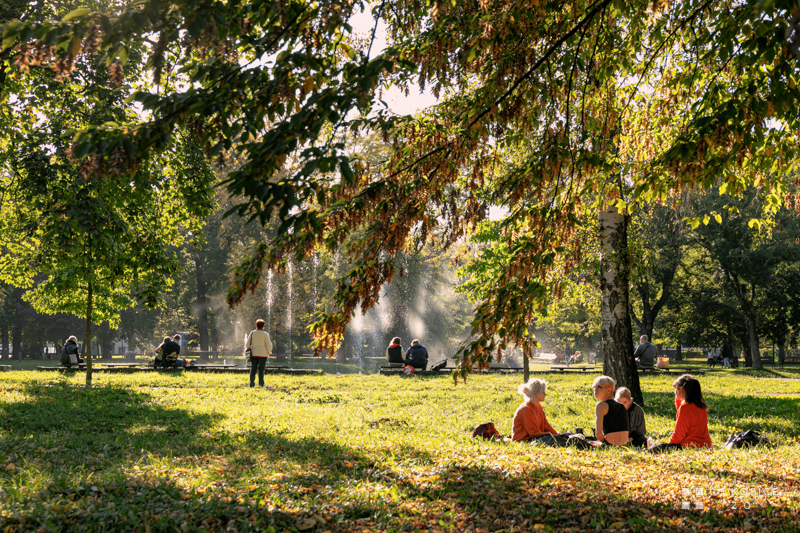
2. Quality of life
People often judge and evaluate lives in different countries, where is the quality of life better or worse. We can find the philosophical background of “quality of life” in Aristotle’s works, in which it depends on the organization of life in the country, town, or household3. In contrast to subjective evaluation of one’s own life, we compare the general living conditions for people in different countries or cities. However, the term quality of life covers a complex and multidimensional concept – the life condition of people in a country/city, which results from the combined influence of many factors. They can be ecological, demographical, social, cultural, economic, or environmental.
Measuring the quality of life
Research of life quality can be conducted on any territorial unit – local, regional, and even national. Traditional quality of life approaches of the 70s of the last century were based on evaluating the economy and gross domestic product. Economy growth is inevitable but not the only condition of well-being. Because of that, other approaches focused on human and social development arose, primarily the OSN initiative called The Human Development Index, which consists of the health and education dimension, and economic growth.
The newer Index of Social Progress consists of an extensive portfolio of dimensions and variables of citizens’ life quality and is published for the European Union countries and regions. Description of areas which we consider when talking about the quality of life varies. Usually, we define dimensions of quality of life and a set of indicators in each of them. Consequently, you can track the overall quality as well as the quality in each of them and compare it among different countries and places.
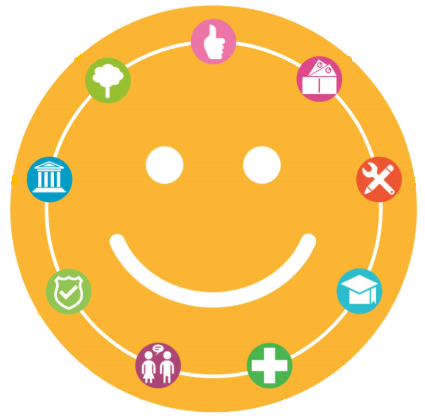
For example, the quality of life in the European Union is measured according to the following eight dimensions and specific indicators4:
- Overall life satisfaction
- Material living conditions
- The productive or main activity
- Education
- Health
- Leisure and social interactions
- Economic security and physical safety
- Governance and basic rights
- Natural and living environment
3. Happiness
What is happiness? In English, we often use happiness as a synonym for subjective well-being. Happiness is a measure in which people evaluate the overall quality of their current lives. The difference is in the historical context and the emotional meaning of happiness. In 2012, based on Bhutan’s Prime Minister initiative, OSN asked the member states to measure the happiness of their citizens and use the results to help them guide their public policies.
One of the philosophical approaches is the eudaimonic approach to a better life, based on Aristotle’s works, and contrasts hedonism – the pursuit of pleasure. It highlights the importance of deep and pure life in pursuing human perfection, the meaning of life, self-fulfillment, and self-development. Goals of personal happiness are strongly influenced by cultural factors. Eudaimonic happiness is the central theme of Buddhism and hedonism is strongly connected to happiness in more individualistic Western cultures.
How to measure happiness5
Measuring happiness is focused on non-material aspects of individual perception of human situations in the way of social relations, autonomy, and self-determination. These are, however, not part of the standard national statistics. Measuring happiness, similarly to subjective well-being, relies on subjectively evaluated results. Gross National Happiness is experimentally used to supplement the standard measuring of development and prosperity of a country (GDP), for example, in Great Britain.
We ask the respondents how happy they are, not about their satisfaction with life. But do the respondents understand the difference between a happy life and satisfaction enough to answer adequately? The questions considering the happiness and joy of life usually cover the current period. Obviously, happiness should be considered in a more extended period, or past periods when people lived a happy life. Carrying out research is very difficult then. At the same time, there is a question of whether we can evaluate happiness only through subjective perception. There are significant cognitive distortions in people processing the self-assessment of personal happiness.

4. Quality of Place
We can assume that quality of life is influenced by the place they live in and work. According to this fact, improving the quality of a place through urban design and planning brings environmental, social, and economic benefits and improves citizens’ quality of life. At the same time, it alleviates problems with ecological degradation, socioeconomic deprivation, inequalities in health and welfare, and poor accessibility of traffic and services. This understanding puts more emphasis on planning and designing public services, and reforming and restoration of public spaces7.
Measuring the quality of place
There exists a mix of quantitative and qualitative approaches, which evaluate significant factors of quality of places influencing the quality of living, physical and social infrastructure: affordable housing offer, design, and building maintenance; considering older and disabled people in construction planning; proposal and maintenance of streets and public spaces; a mix of shops, cafés, and restaurants; availability and quality of cultural facilities; quality of traffic infrastructure; availability and quality of public services; a variety of sports and recreational facility; amount and quality of green infrastructure and green space; treatment of historic buildings and localities.
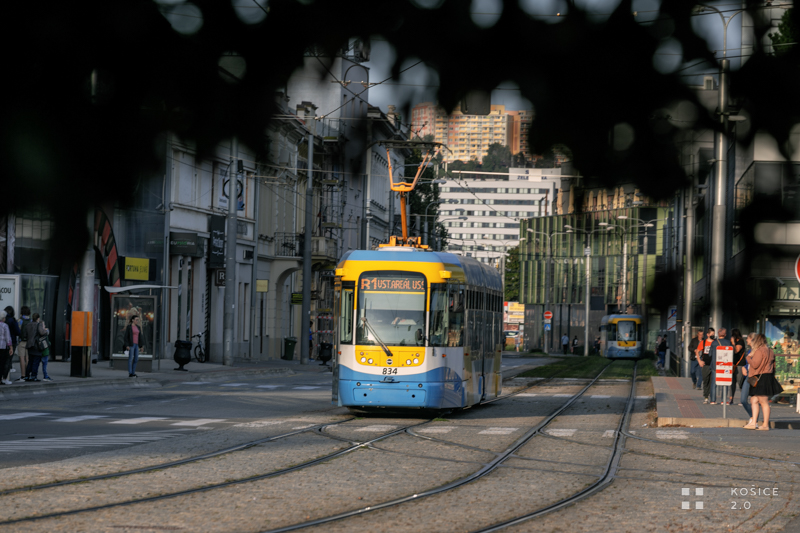
Well-being from Košice 2.0 project’s perspective
Many organizations create rankings of the cities according to a quality of life, prosperity, the best city for housing. Approaches in evaluations vary. The Global Liveability Index (The Economist) or Monocle’s Quality of Life Survey (Monocle), Mercer’s Quality of Living Ranking (Mercer) evaluate a variety of several dimensions of environmental and global cities’ lives, and the result of the composite index allows them to create annual rankings. It is interesting to see that the emphasis on another index results in the different rankings in the cities. Among the most valued cities are the European ones (Vienna, Zurich, Copenhagen), the Australian’s (Melbourne, Brisbane), and the ones in New Zealand (Auckland, Wellington).
It is essential for cities, including Košice, to set their own indicators, defined as key ones for influencing the quality of life. Even though rankings are highly followed, Košice doesn’t have the ambition to become Vienna, Melbourn, or Tokyo. Global stimulus is vital for following the current trends and innovations or taking over the positive know-how. At the same time, these impulses from the world should be appropriately confronted with the specific local character of Košice to keep its identity, attractivity, and uniqueness.
The enormous potential of project Košice 2.0 is not only in citizens’ participation but also in partnership with innovatively thinking experts of local self-governing institutions, entrepreneurs, universities, and the third sector.
Well-being and quality of place
Project Košice 2.0 emphasizes the well-being of citizens and quality of living from many perspectives. It stands upon the development of cultural background and infrastructure, created during the European Capital of Culture project in 2013. Unleashed creative potential in people should be used to form a vision for the city and support the participation of citizens, entrepreneurs, makers of politics, and city employees on creative ideas of visual and functioning solutions in many different parts of the city.
It is hard to imagine implementing ideas if there is a lack of trust in the institutions. Therefore, a key to positive changes in satisfaction is open communication based on trust and early data publication and information. Mutual, transparent, and well lead communication should allow the positive transformation of the city in cooperation with self-government, inhabitants, and innovative entrepreneurs.
Well-being and data
Subjective well-being of citizens should improve if we enhance the quality of the city’s environment and public spaces for their living, also based on their participation in forming the changes. The city will receive the evaluation of the quality of current services, allowing their reorganization and proposals for new public services in favor of the citizens.
City’s data are present in this process in different forms. Data collection will influence the re-design of public services and the quality of urban spaces. Availability of the city’s data on one platform will inspire their use by all the city’s subjects, and digitalization will enable innovations in the public administration’s performance. Data will be used in the creation of local politics and the preparation of strategic documents for the city of Košice. Data gained from the researches will serve as information to find out the impact of project activities on the well-being of citizens, improvement of trust towards the institutions, cultural participation of citizens, civic engagement, and entrepreneurship.
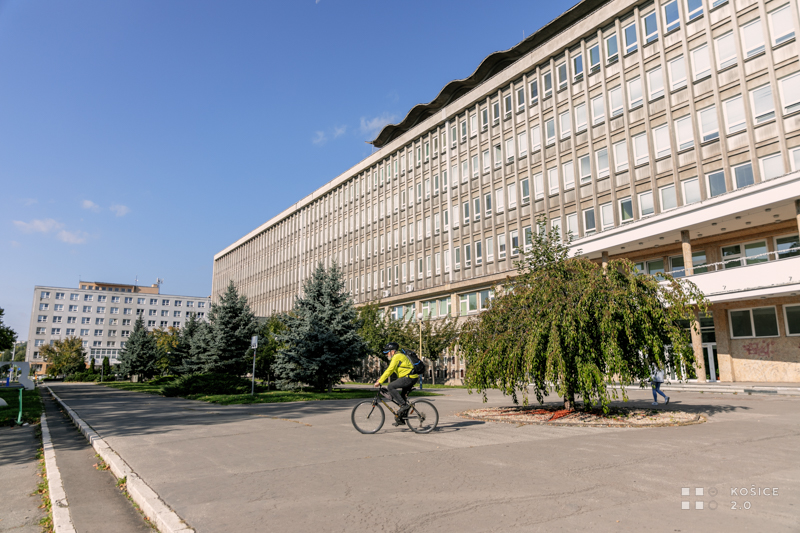
Bibliography:
1: Diener, E. (1984). Subjective well-being. Psychological Bulletin, 95(3), 542–575
2: OECD. (2013). OECD guidelines on measuring subjective well-being. OECD
3: Sinha, B. R. K. (Ed.). (2019). Multidimensional Approach to Quality of Life Issues: A Spatial Analysis. Springer
4: https://ec.europa.eu/eurostat/web/quality-of-life
5: Tachibanaki, T. (2015). Advances in happiness research. Tokyo: Springer
6: Michalos, A. C. (Ed.). (2014). Encyclopedia of quality of life and well-being research. Springer

